Roman Lutetia
Paris has been around for a long time. In 8,000 BC, a group of hunters and gatherers lived in this area, and in 250 BC, we find a Celtic settlement called Parisii in current Ile de la Cité. This community of Celtics built forts for protection, traded with other settlements across Europe, and had their own coin.
However, it was the Romans the first people to truly set up roots in Paris. Cesar’s armies conquered the Parisii in 52 BC and decided to call the new settlement Lutetia.
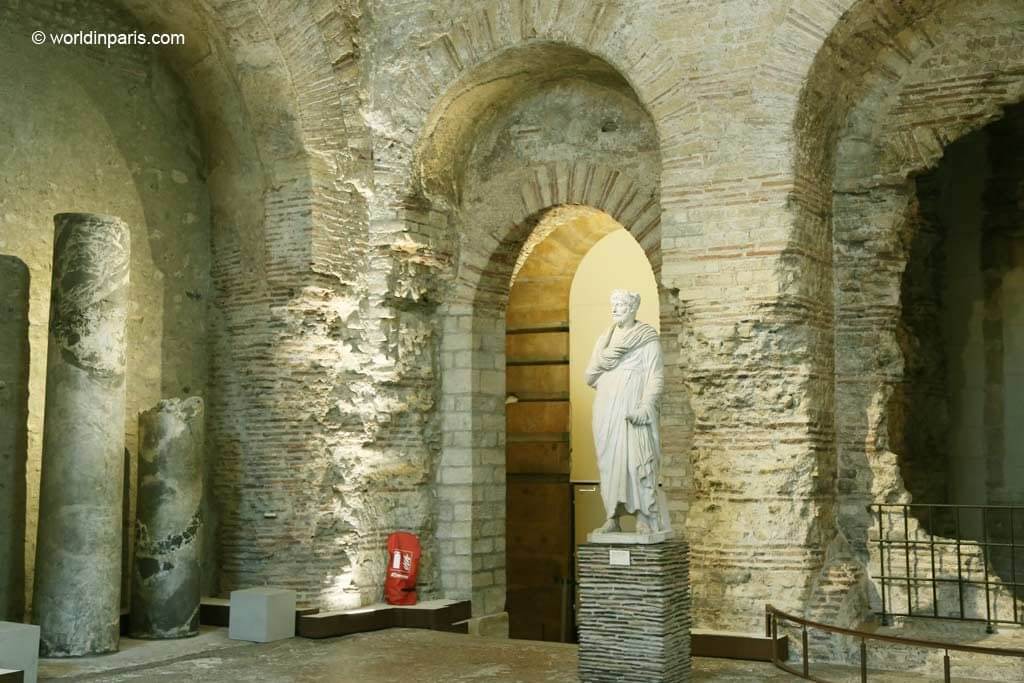
LUTETIA DURING THE HIGH EMPIRE (1st century BC – 3rd centuryAD)
Lutetia, Roman Paris, was a small city compared to other Roman cities in the south of France. The Romans settled on the Seine’s left bank, on the slopes of St. Geneviève hill (current Place du Panthéon). A permanent army or legionary camp existed nearby.
The city of Lutetia had the typical Roman layout, a grid system with some irregularities due to the pre-existing roads. The city’s Cardo Maximus was the old Gallic road (current rue Saint-Jacques) while the Decumanus Maximus has been almost completely erased from the present-day topography of Paris.
The heart of Roman Paris was the Forum, the city’s main square (177,6 m x 88,8 m) built at the image of Rome’s forum and with the main civil and religious buildings. It was delimited by current Boulevard Saint Michel (west) and rue Saint Jacques (east).
On 172 – 174 rue Saint Jacques we imagine the zero point chosen by the Roman geometers and surveyors to establish the plan of the city of the High Empire. The forum had a basilica (civil functions), a temple, and several shops.
The Romans were excellent engineers and builders. In Paris – Lutetia, they built the forum’s buildings, a theater, an amphitheater, and several thermal baths. A 16km-aqueduct transported the water from several sources to the city to feed the baths and fountains.
LUTETIA DURING THE LOW EMPIRE (3rd century to 4th century AD)
With the Barbarians’ invasions, around the 3rd century AD, there was a phenomenon of progressive disaffection of the Roman city on the left bank. The necropolis of the High Empire and most of the public monuments were abandoned, and the heart of Roman Lutetia moved to Ile de la Cité.
Under the Low Empire, we find Lutetia’s new city center on Ile de la Cité and it was protected by massive walls.

Where to Find Roman Ruins in Paris
The vestiges of the Gallo-Roman period are rare in Paris, but curious wanderers can still see a few Roman ruins in Paris. Here’s the roundup of the main vestiges of Lutetia – Roman Paris, with no particular order.
Lutetia’s Walls at Rue de la Colombe
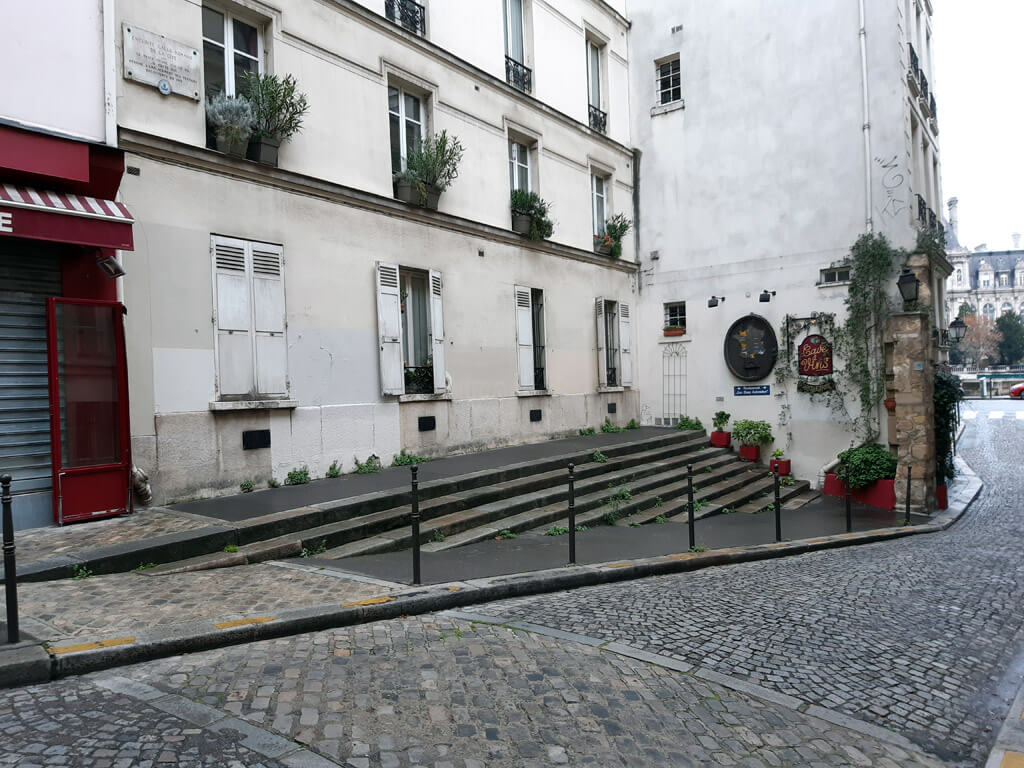
At 5 rue de la Colombe, a special paving recalls the discovery of a section of the rampart built during the Low Empire (4th century AD).
In that time of insecurity, Lutetia became one of the Roman defense system’s strong points to face the Germanic incursions, and the city was deeply transformed. This process ended in the 4th century AD with the construction of a rampart protecting the new city center on Ile de la Cité.
Roman Lutetia at Crypte Archéologique
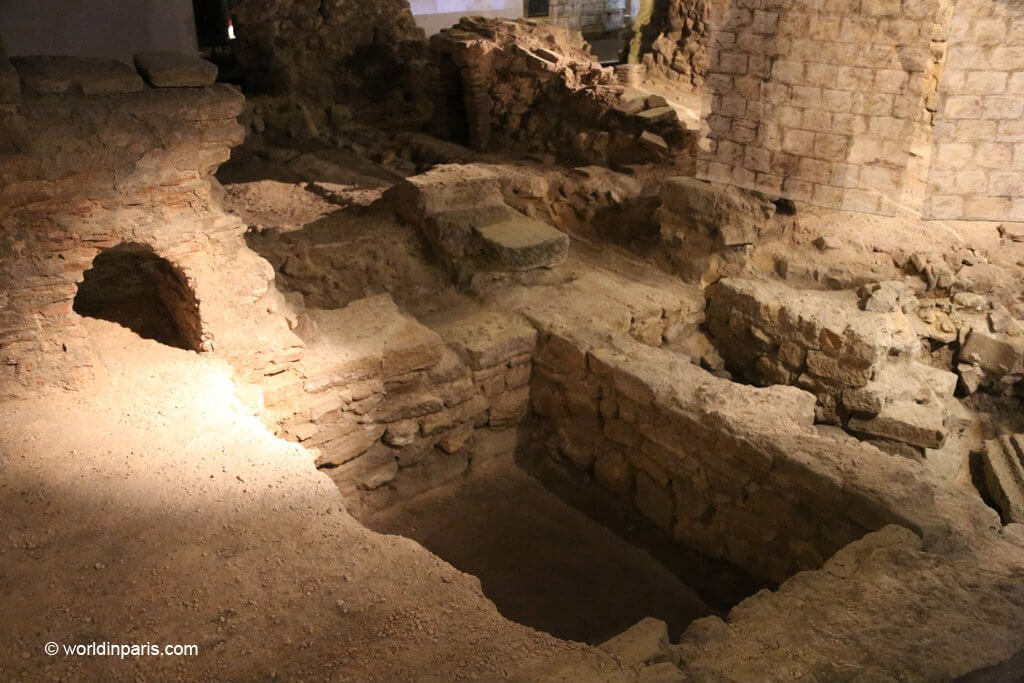
The Archaeological Crypt is one of the best sites of Paris underground and the places where you can find most of the Roman ruins in Paris.
In the crypt are preserved the vestiges of the Roman Paris, particularly the first quay of the island, houses with hypocausts, a monumental wall with buttresses or elements of the rampart on which rests the Merovingian cathedral of Saint-Etienne.
The visit to this fascinating museum starts with some information panels, models, and different media that tell the story of the Celtic settlements (the Parisii) and Roman Lutetia.
- Crypte Archéologique de l’Ile de la Cité
- Address: 7 Parvis Notre Dame – Pl Jean Paul II, 75004 Paris
- Open: every day except Monday 10:00am-6:00pm.
Le Petit Pont
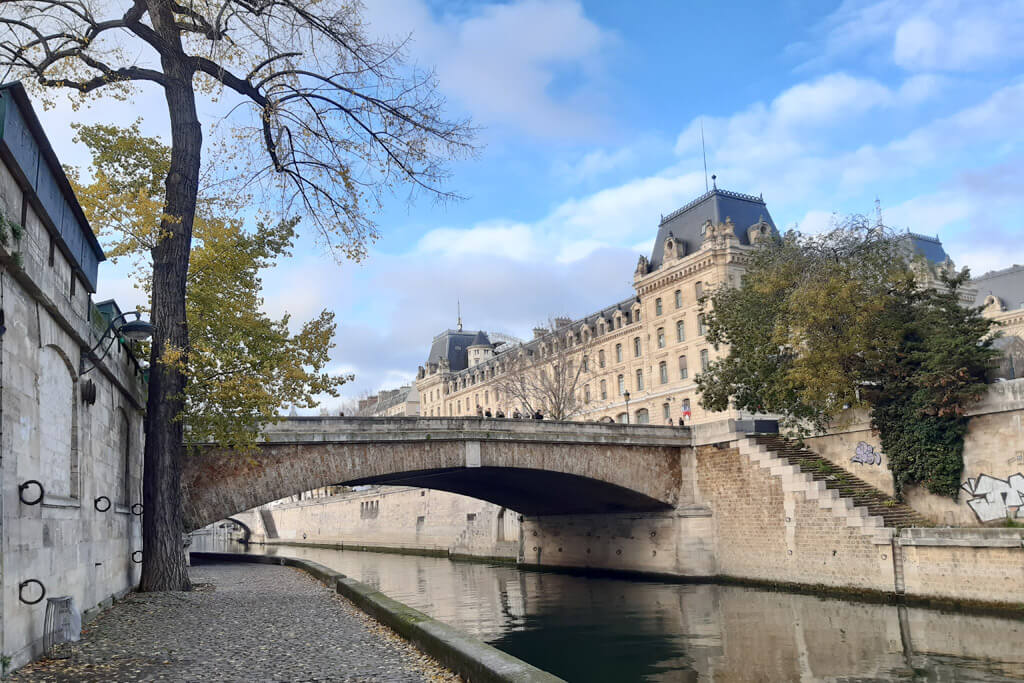
This modern bridge, connecting Ile de la Cité to the left bank, stands at the ancient Roman bridge’s exact location.
Roman Lutetia was laid out at the intersection of the Seine and two parallel Roman roads running north-south.
The easternmost of these streets (today’s rue St-Jacques) served as the Cardus Maximus or main NS street. Ultimately coming from Spain, this road passed through Orléans (Cenabum) to Paris, and crossed the Seine at the Île de la Cité via the Petit Pont (‘small bridge’) and went north through Senlis.
Roman Baths at Musée Cluny
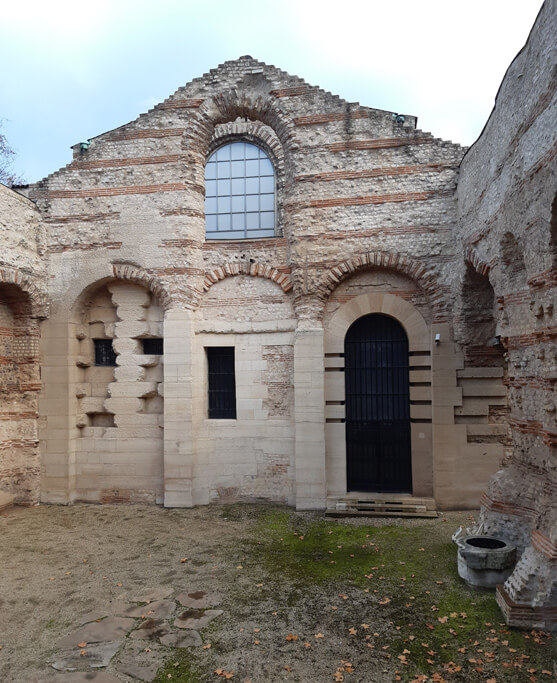
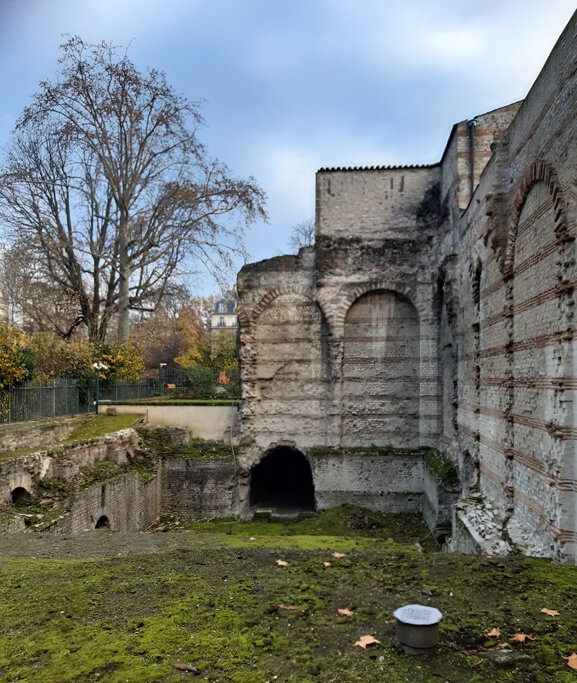
Musée Cluny is a fascinating museum dedicated to the Medieval Age. Also, it hosts the vestiges of Lutetia’s monumental baths. These Roman baths in Paris were built around the 1st – 2nd centuries AD, and they had a surface of 6,000m2.
Rediscovered in the 12th century, the Cluny Baths (named after the museum with the same name) retain large sections of the frigidarium or cold room with massive walls and a 14m high-vault, and part of the palestrae, used for physical exercise. You can also see ancient sculptures and part of the mosaics that decorated the floors.
- Cluny Museum – National Museum of the Middle Ages
- Address: 28 rue du Sommerard, 75005 Paris
- Open: every day except Monday 9:15am-5:45pm. Currently closed for renovation works.
Lutetia’s Sewer System at Musée Cluny

From time to time, the museum organizes guided visits to explore the deeply buried hydraulic network below the floor of the Roman baths. This network, different from the sewer system that we can see in the Paris Sewer Museum, includes sewer pipes and hypocaust pilings. It is fascinating!
Arènes de Lutèce
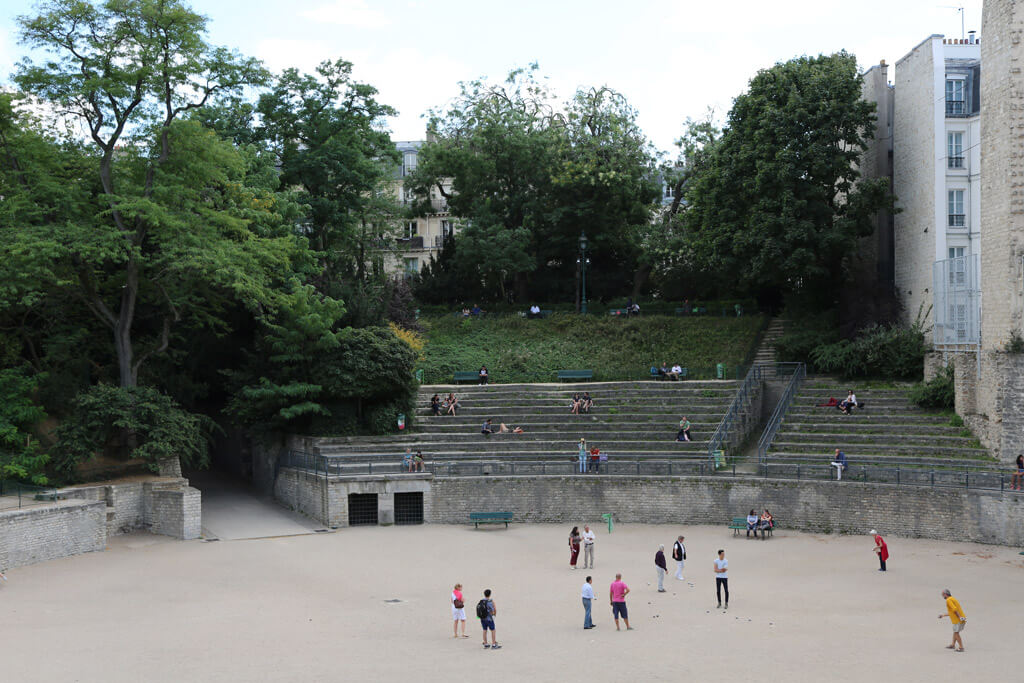
What is traditionally called Arènes de Lutèce is in fact a Gallo-Roman amphitheater of a mixed character or stage amphitheater. It consisted of an elliptical arena, two large side entrances, and an incomplete cavea, the missing part being occupied by a stage for performances of all kinds.
The arena was used for bloody performances such as gladiatorial combats (munera) and wild beast hunts (venationes). The building had an exterior gallery and a richly decorated facade.
Today the Arènes de Lutèce are the most popular Roman ruins in Paris, and they work as a public garden. Here, it is common to see people playing pétanque or football in the arena. The surrounding gardens are a popular picnic spot.
- Arènes de Lutèce
- Address: 49 rue Monge, 75005 Paris
- Open: every day except, hours depending on the season

